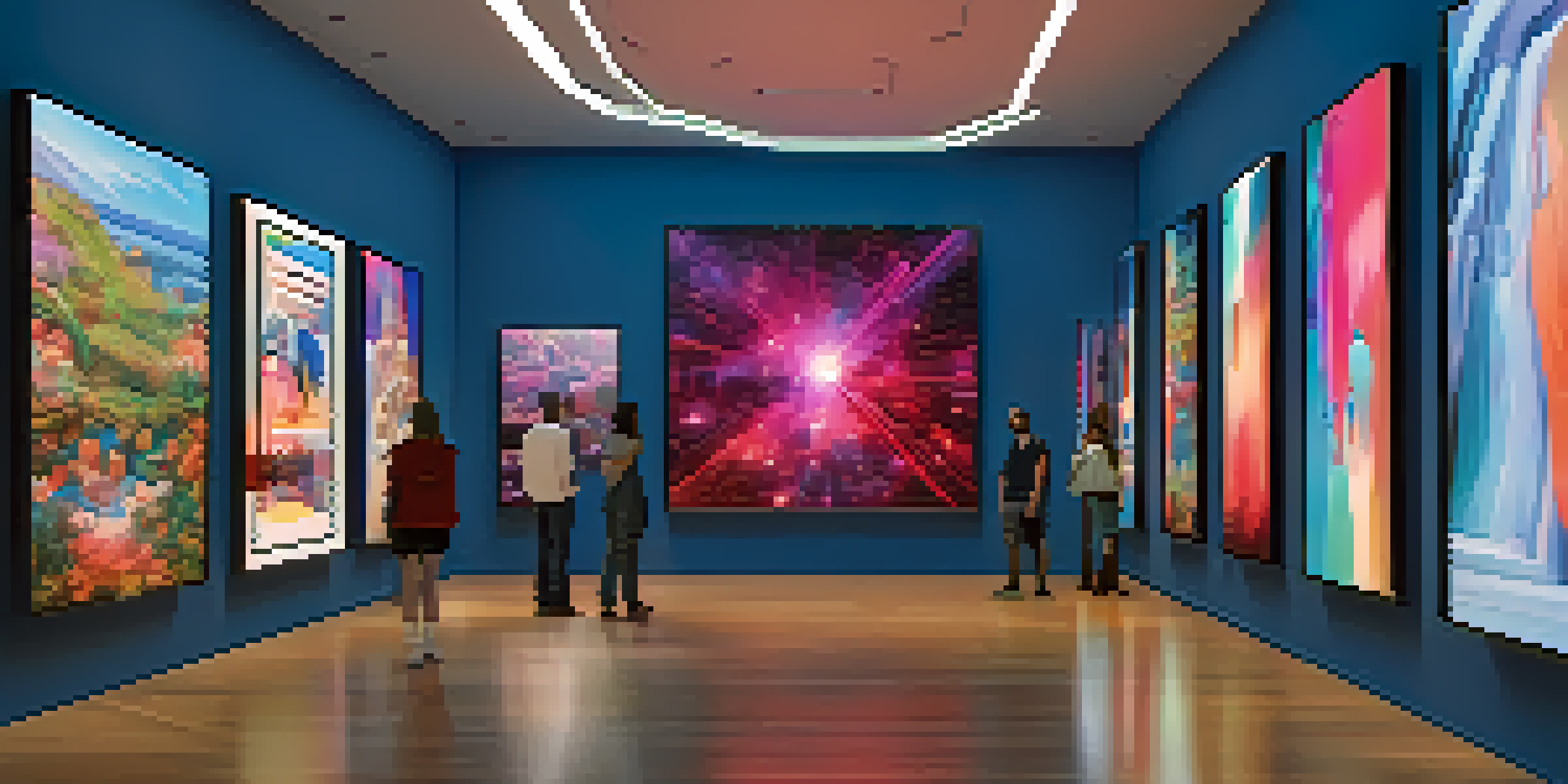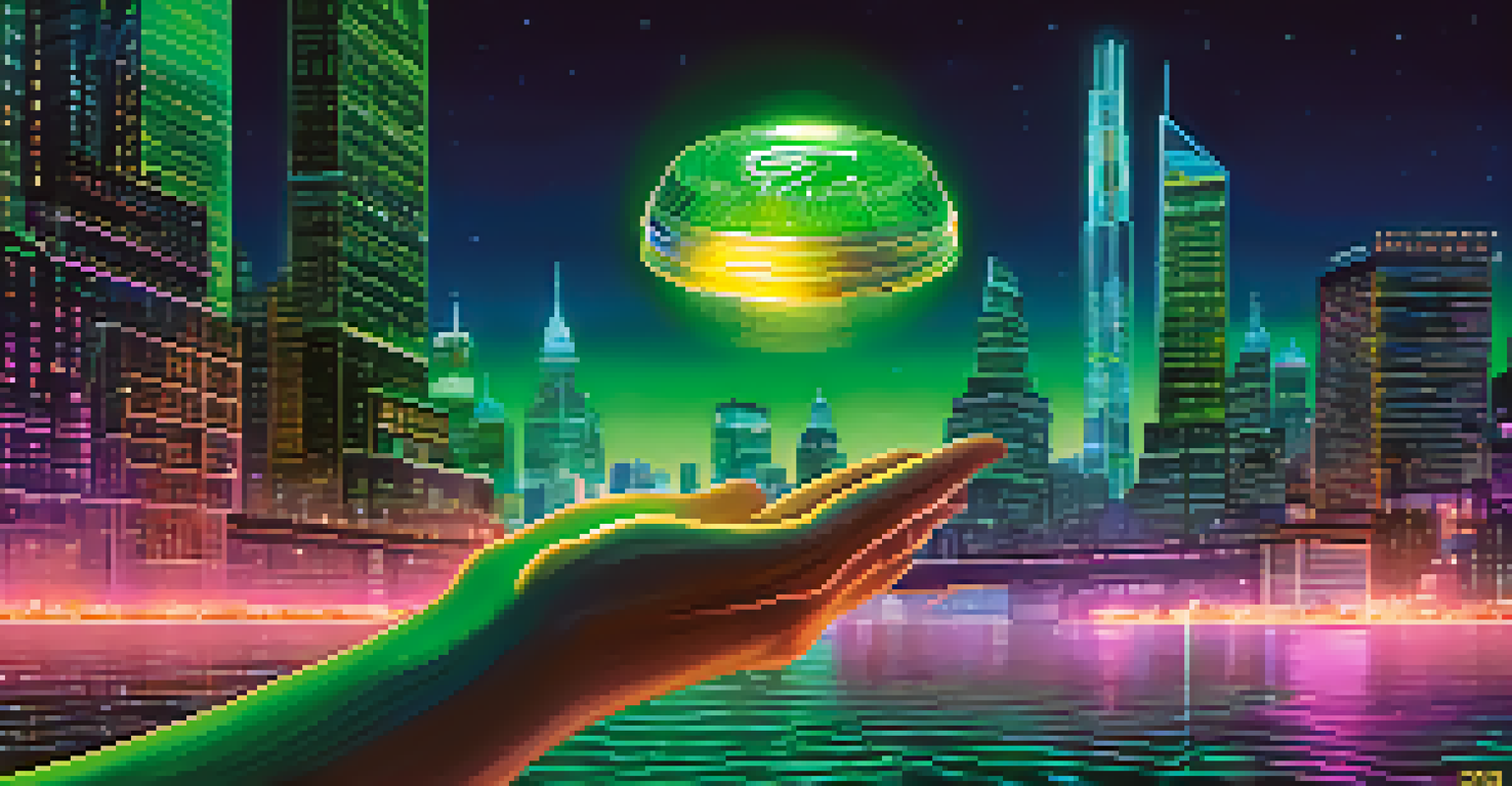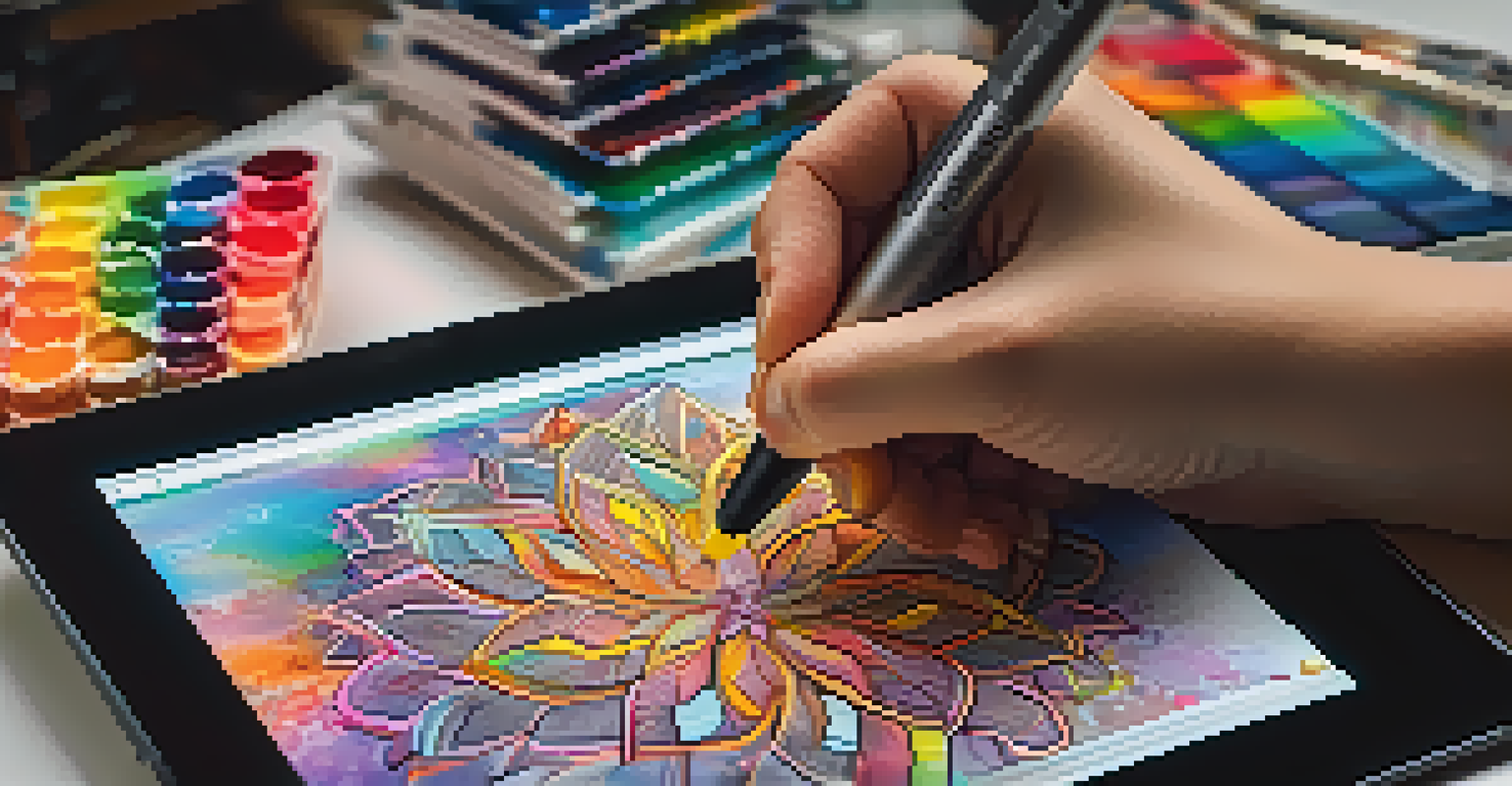How NFTs Challenge Traditional Concepts of Digital Ownership

Understanding NFTs: A Quick Overview of Digital Assets
NFTs, or Non-Fungible Tokens, are unique digital assets verified using blockchain technology. Unlike cryptocurrencies such as Bitcoin, which are interchangeable, NFTs represent one-of-a-kind items like artwork, music, or even tweets. This uniqueness is what makes them appealing to collectors and creators alike, as each NFT comes with a certificate of authenticity.
Digital ownership is the new frontier of ownership itself.
Imagine owning a digital painting that is the only one of its kind in the world. That’s what NFTs allow you to do — own a piece of digital art in a way that’s verifiable and secure. This technology not only empowers artists but also creates a new market for digital goods, merging art and technology in unprecedented ways.
As we dive deeper into the world of digital ownership, NFTs challenge traditional views on what it means to own something in the digital realm. They raise questions about value, scarcity, and authenticity in a space where everything can be copied.
The Shift from Physical to Digital Ownership
Traditionally, ownership was tied to physical assets. You could hold a painting, a piece of jewelry, or a car, knowing you owned it. However, as we transition to a more digital lifestyle, the concept of ownership is evolving, and NFTs are at the forefront of this change.

With NFTs, people can now own digital versions of items that previously had no clear ownership structure. For instance, someone could own a digital collectible, like a virtual trading card, which might be worth thousands, despite being intangible. This shift is redefining what it means to own and trade in the digital age.
NFTs Redefine Digital Ownership
NFTs challenge traditional views of ownership by enabling unique digital asset ownership verified through blockchain technology.
As this transformation continues, we must consider how we value digital assets compared to physical ones. The lines between virtual and physical ownership are becoming increasingly blurred, prompting us to rethink our perceptions of value and possession.
Decentralization: NFTs and Ownership Control
One of the most significant aspects of NFTs is their decentralized nature. They are built on blockchain technology, which allows for transparent transactions without a central authority. This decentralization gives creators more control over their work and how it is sold or traded.
The future is already here — it's just not very evenly distributed.
In traditional art markets, intermediaries like galleries or auction houses often dictate prices and terms of sale. However, with NFTs, artists can directly connect with buyers, setting their own prices and retaining royalties on future sales. This empowers creators and fosters a direct relationship with their audience.
As we embrace this decentralized model, it not only challenges conventional ownership but also has the potential to disrupt entire industries. We are witnessing a shift where creators regain power, and consumers become more involved in the ownership process.
NFTs and the Concept of Scarcity in the Digital Age
Scarcity has always been a fundamental aspect of ownership and value, especially in the physical world. However, in the digital realm, where duplication is effortless, scarcity was often an illusion. NFTs introduce a new layer of scarcity by providing a way to prove ownership of a unique digital item.
Think of it like a limited-edition print of a famous painting. Just as only a few copies exist, NFTs can represent limited editions of digital artworks, thereby increasing their perceived value. This scarcity is what drives demand and fuels the NFT market, making it a fascinating space for collectors and investors.
Decentralization Empowers Creators
The decentralized nature of NFTs allows artists to control their work, set prices, and connect directly with buyers, bypassing traditional intermediaries.
As digital scarcity becomes a reality, it raises intriguing questions about what we value and why. Are we willing to pay high prices for digital items simply because they are scarce, even if they are easily replicable? The answer might redefine our understanding of ownership in the digital landscape.
Challenges and Criticisms of NFTs in Ownership
Despite their growing popularity, NFTs face several challenges and criticisms that question their sustainability and value proposition. Concerns regarding environmental impact, primarily due to the energy consumption of blockchain technology, have sparked debates about the viability of NFTs in the long run.
Additionally, the market is rife with speculation, leading some to argue that the hype surrounding NFTs creates artificial inflation of prices. This speculation can result in a bubble that may eventually burst, leaving many investors in the lurch. The question remains: are NFTs a fleeting trend or a lasting shift in how we view ownership?
These challenges underscore the need for a deeper understanding of what NFTs represent. As we navigate this evolving landscape, it’s essential to critically assess their role in digital ownership and what it means for the future.
NFTs and Copyright: Navigating Ownership Rights
The rise of NFTs has opened up discussions around copyright and ownership rights in the digital realm. While owning an NFT may grant you ownership of a digital asset, it doesn’t always include the copyright to the underlying work. This distinction can lead to confusion for buyers and creators alike.
For instance, if you purchase an NFT of a piece of digital art, you may not have the right to reproduce or sell it without the artist's permission. Understanding these nuances is crucial for anyone entering the NFT space, as it can affect how they use and interact with their digital assets.
Scarcity in Digital Assets
NFTs introduce a new concept of scarcity in the digital world, providing proof of ownership for unique items that enhances their value.
As the NFT market matures, conversations around copyright and ownership rights will need to evolve. Clear guidelines and frameworks will be necessary to protect both creators and collectors, ensuring that everyone understands their rights and responsibilities in this new digital frontier.
The Future of Digital Ownership: What Lies Ahead?
As NFTs continue to gain traction, the future of digital ownership looks promising yet uncertain. We are witnessing a paradigm shift that could redefine how we think about owning and trading digital assets. With advancements in technology and growing interest from various industries, NFTs might become a standard form of ownership.
However, it’s essential to balance enthusiasm with caution. The challenges and criticisms surrounding NFTs must be addressed to ensure their long-term viability. This includes finding sustainable solutions, establishing clear ownership rights, and fostering a healthy market that supports creators and collectors.

Ultimately, the evolution of NFTs and digital ownership will depend on our collective ability to adapt and innovate. As we explore this uncharted territory, we have the opportunity to redefine value, ownership, and what it means to truly own something in the digital age.